Home ➔ ADHD Struggles ➔ Prioritising ➔ Everything First, Nothing Finished
ADHD & Prioritising
You’re not careless. You’re juggling tasks with no clear gravity. ADHD makes prioritising feel like everything is urgent and nothing is urgent — all at once. The hardest part isn’t doing the thing… it’s figuring out which thing to do first.

Why Planning Feels Impossible with ADHD
ADHD brains don’t naturally sort by importance. Instead of a neat to-do list, it feels like a pile of tabs open in your head — all blinking at once, none clearly louder than the others. You might know what matters most, but that doesn’t always connect to action. That’s because ADHD impacts executive functions like task switching, future thinking, and emotional filtering. It’s not that you don’t care — it’s that your brain doesn’t label things the way neurotypical brains do.
Things That Actually Help
Because knowing what matters doesn’t always mean you can act on it. With ADHD, prioritising isn’t just a mental checklist — it’s a constant tug-of-war between urgency, overwhelm, and interest. These tools are designed to cut through the chaos and help your brain choose what actually counts.
The Urgency/Importance Grid
Use a visual aid to help your brain see what matters. Sort tasks by “urgent vs important.” Many ADHDers spend time in the urgent-but-not-important box — this helps reroute attention toward the things that matter most.
One Sticky Note Rule
Instead of a full to-do list, use one sticky note with three key tasks for the day. It narrows your focus and makes decisions easier on the fly.
Make the First Step Obvious
If something is “high priority” but feels too big, shrink it. Define the very first action — open the email, name the file, write the heading. ADHD brains need momentum to follow importance.
Use Time, Not Feelings
Instead of doing one giant plan at the start (and abandoning it later), create mini check-ins. ADHD planning works better when it’s flexible, visual, and revisited often.
Where It Shows Up in Daily Life:
Prioritising problems might look like:
- Hours lost on small tasks
- Avoiding tasks that feel big
- Frozen by equal urgency
- Starting many, finishing none
- Reacting instead of planning
Why It’s So Emotionally Draining
Prioritising problems don’t just waste time — they wreck confidence. You want to do the right thing. You mean to. But somehow you’re always behind, always chasing, always explaining. You feel like a failure… even when you’ve been working nonstop.
The Spinning Compass Brain
Imagine trying to follow a compass that keeps spinning. You know where you should be going, but your internal sense of direction won’t hold still. That’s ADHD prioritising: constant motion, zero clarity. The fix isn’t more effort — it’s building tools to anchor your direction.
Common Questions
More ADHD Struggles
ADHD rarely shows up alone. Beyond daily life, parenting, or relationships, there are often overlapping struggles — from executive dysfunction to emotional swings. Explore more ADHD struggles to see what else might click for you.

